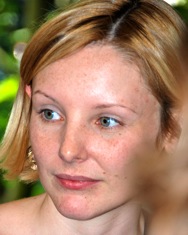 |
||||||
| School of Medicine • University of Washington • Box 357735 • 1705 NE Pacific St • Seattle WA 98195 | ||||||
| About Jennifer O'Connor |
Email: Phone: Location: Mailing Address: Shipping Address: |
Research | ||||
Dr. O’Connor obtained her Bachelor of Science degree and PhD. from Monash University, Melbourne, Australia. She conducted her PhD. studies in the laboratory of Prof. Julian Rood on the diarrheal pathogen Clostridium difficile. During this time she developed a genetic manipulation system to study regulation of gene expression in C. difficile. In 2007 Dr. O’Connor moved to Chicago, Illinois to conduct postdoctoral studies on antimicrobial resistance, pathogenesis and prevention of C. difficile infection in the laboratory of Dr. Dale Gerding at Hines VA Hospital and Loyola University Stritch School of Medicine. She moved to Prof. Caroline Harwood’s laboratory at the University of Washington in 2009, where she studies biofilm formation and cyclic-di-GMP signaling in Pseudomonas aeruginosa.
|
Biofilm formation by Pseudomonas aeruginosa is important for antimicrobial resistance and chronic colonization of the lungs of cystic fibrosis patients. The wrinkly spreader phenotype (Wsp) of P. aeruginosa is an indicator of its ability to form a biofilm. Wrinkly spreader colony morphology and biofilm formation are triggered, in part, by an increase in the concentration of the intracellular secondary messenger, cyclic-di-GMP (c-di-GMP). The Wsp sensory transduction system consists of seven proteins (WspA-F and WspR) that resemble the components of an archetypal chemosensory signal transduction complex. When the system is activated the WspR protein is switched on and synthesizes c-di-GMP. Dr. O’Connor seeks to further characterize the functions of the individual Wsp proteins and to understand the molecular mechanisms underlying the activation and deactivation of signal transduction in the Wsp system.
|
|||||
 Jennifer O'Connor
Jennifer O'Connor